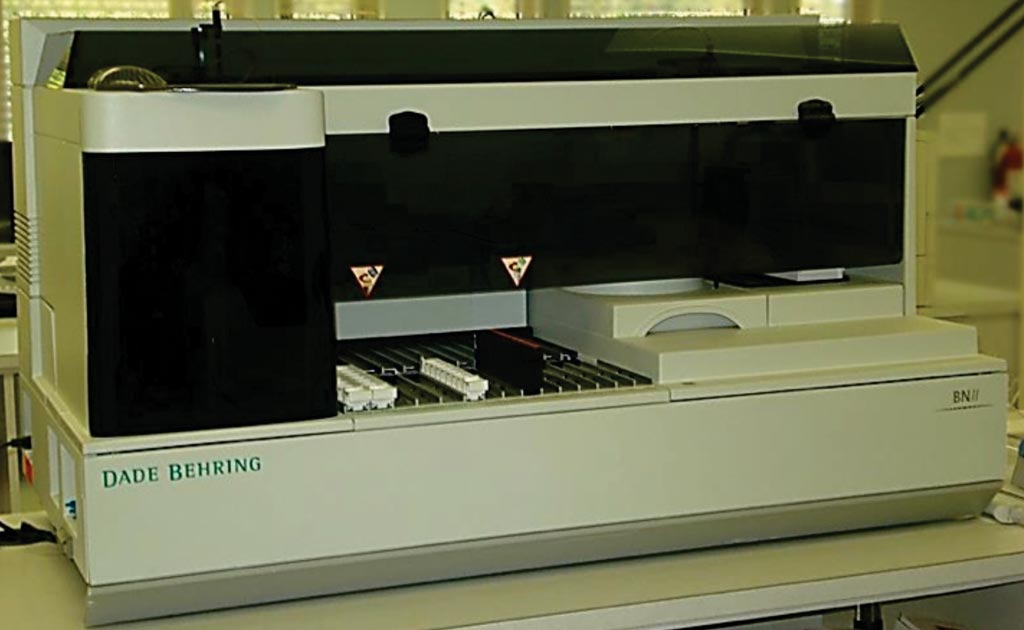Low Levels of Klothos Linked to Kidney Function Decline
By LabMedica International staff writers
Posted on 15 Feb 2017
The kidney has the highest levels of klotho expression and is likely the major source of soluble klotho and not surprisingly, therefore, levels of klotho tend to be low in patients with kidney disease.Posted on 15 Feb 2017
Soluble klotho is a protein circulating in the blood that is thought to have anti-aging properties and although the exact mechanism of action of soluble klotho remains to be identified, the protein has been shown to influence multiple cellular and endocrine pathways.

Image: The Dade Behring BN II automated nephelometer system (Photo courtesy of Siemens Healthcare).
A large team of scientists led by those at Tufts Medical Center carried out a prospective cohort initiated in 1997 with a goal of assessing how health conditions affect age-related physiologic and functional status. The study population consists of 3,075 persons aged 70 to 79 years at baseline with equal numbers of men and women and approximately one third African-Americans. All 2,496 participants who had measures of klotho and kidney function at baseline, and at least one repeat measure of kidney function were included in this study.
Serum soluble α-klotho was assayed using a commercially available sandwich enzyme-linked immunosorbent assay (ELISA) test from never-thawed frozen serum stored at -70 °C and obtained at the year two visit, approximately one year after the baseline visit. This assay is reported to have a sensitivity of 6.15 pg/mL, and demonstrated an interassay coefficient of 18%. The associations between soluble klotho levels and decline in kidney function and incident chronic kidney disease (CKD) were evaluated. Cystatin C was measured at baseline, as well as years three and 10, from stored frozen serum samples using a BNII nephelometer and an N Latex Cystatin C particle-enhanced immunonephelometric assay.
The scientists found that the median (25th, 75th percentiles) klotho level was 630 (477, 817) pg/mL. In fully adjusted models, each two-fold higher level of klotho associated with lower odds of decline in kidney function (odds ratio, 0.78) for 30% decline in estimated glomerular filtration rate (eGFR), and 0.85 for greater than 3 mL/min per year decline in eGFR, but not of incident CKD (incident rate ratio, 0.90). Overall, a higher soluble klotho level independently associated with a lower risk of decline in kidney function.
David A. Drew, MD, MS, the lead author of the study, said, “We found a strong association between low soluble klotho and decline in kidney function, independent of many known risk factors for kidney function decline. This suggests that klotho could play a role in the development of chronic kidney disease, although additional studies will need to confirm this. This also raises the possibility that klotho could be an important therapeutic target for future clinical trials.” The study was published on January 19, 2017, in the Journal of the American Society of Nephrology.













